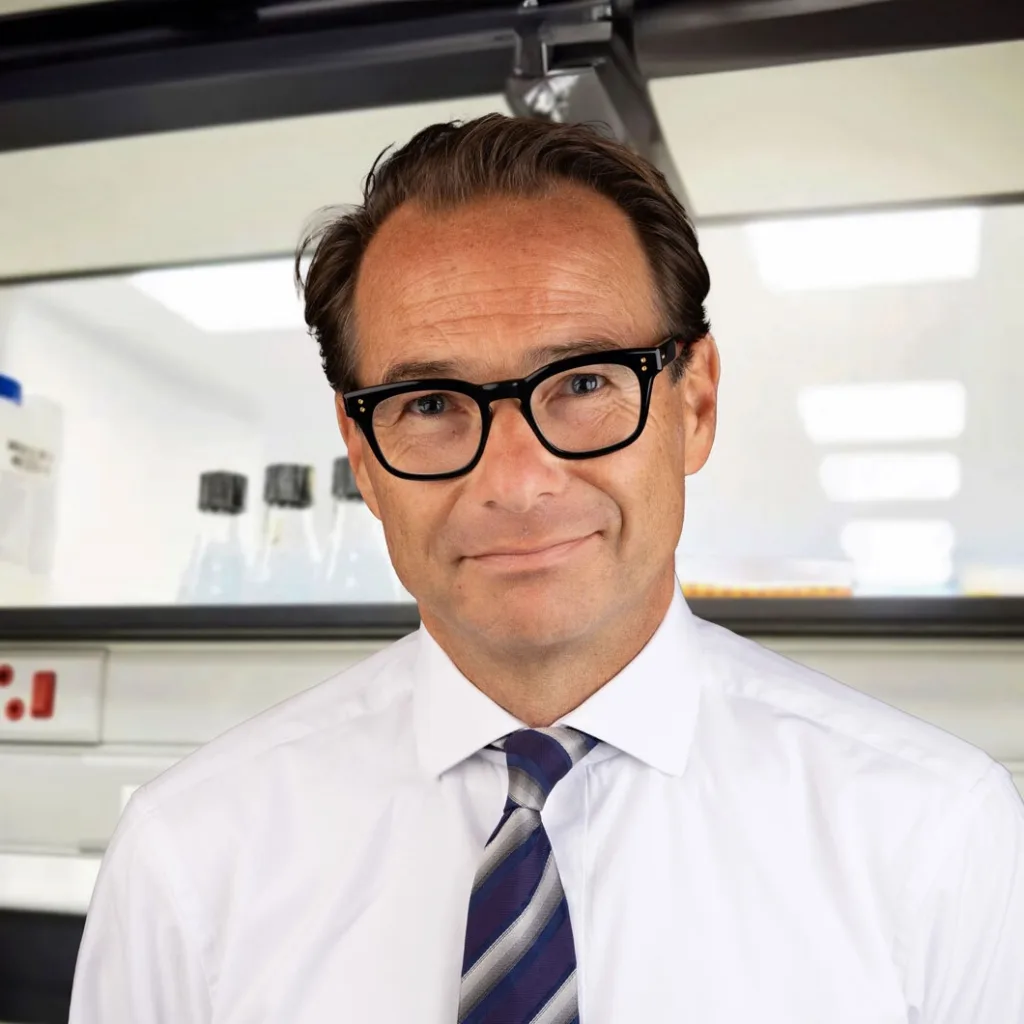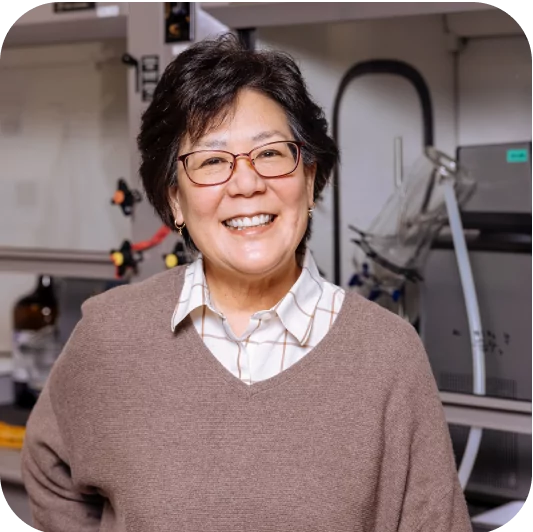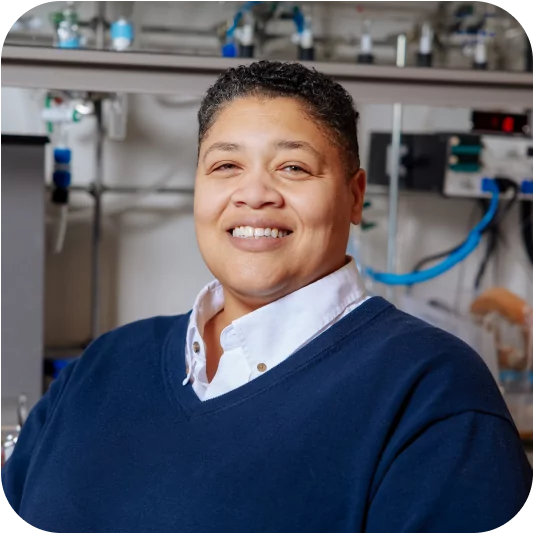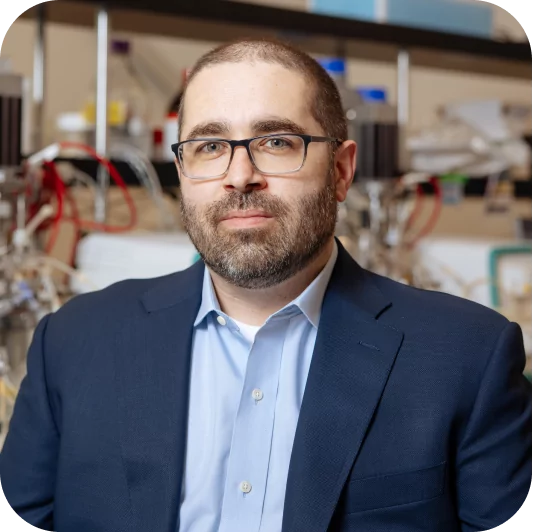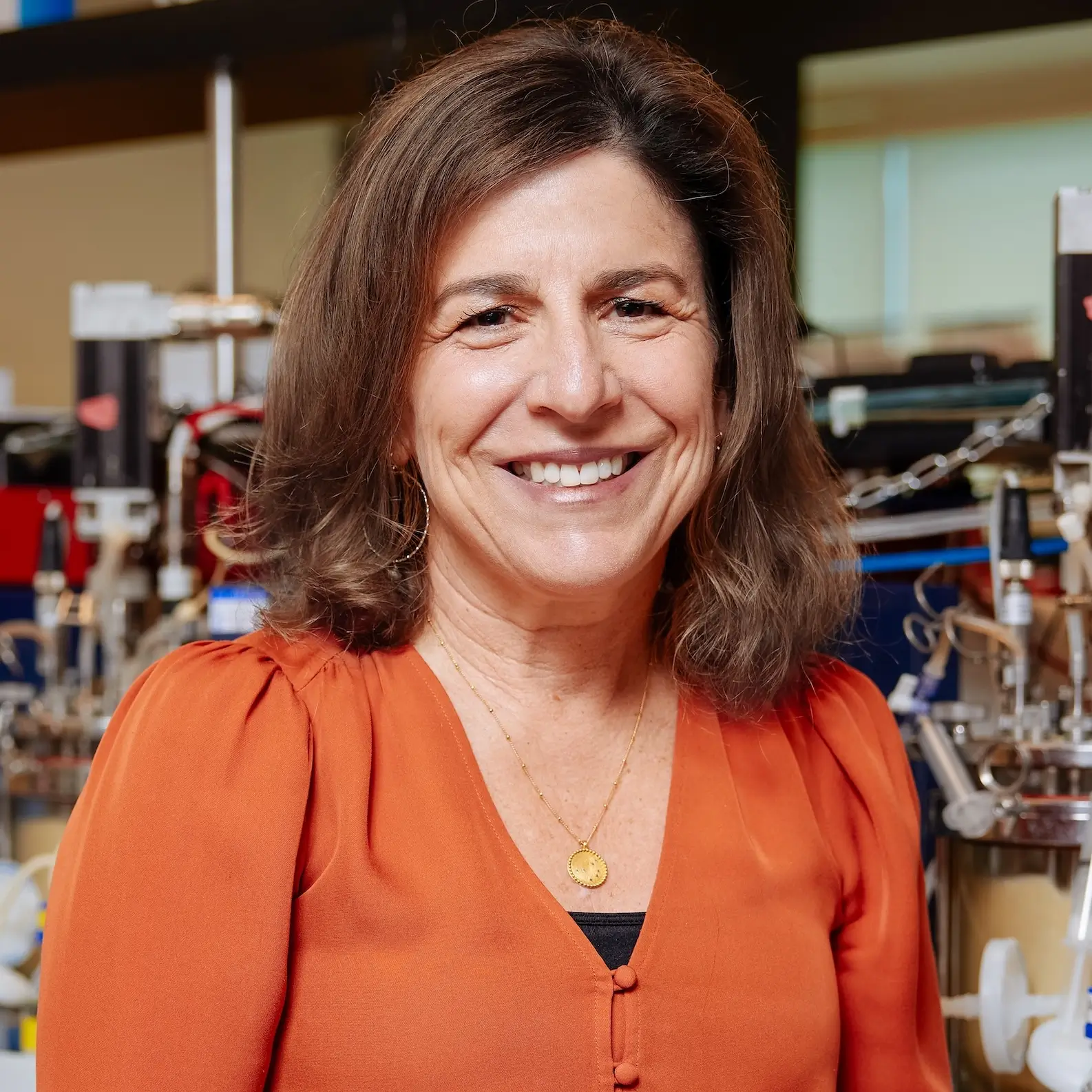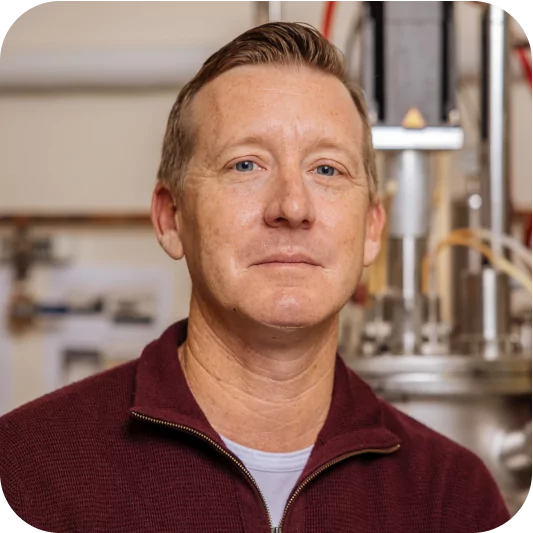Antheia’s Chief Operations Officer Zack McGahey offers his perspective on the company’s most recent commercial milestone – a successful full-scale fermentation run of its first product at 116,000L.
The completion of our recent commercial-scale production run is a tremendous accomplishment for our team and marks a turning point for supply chain challenges that continue to plague the pharma industry. Validating our biomanufacturing platform at this scale is an important step in moving production dependencies away from legacy sourcing to a more reliable, efficient, and agile approach.
Bringing Antheia’s vision to life has been a complex journey – as any commercialization process is – of experimentation, process development, and layer upon layer of careful decision making. I joined Antheia in November 2021 to lead our transition to manufacturing and this commercial milestone is a huge achievement for Antheia, as well as the synbio industry.
When I drill down to the core aspects of what made this recent success possible, it comes down to three main elements: building a world-class team, managing stage-appropriate investments, and establishing strong relationships with third-party partners.
Curating a Purpose-Built Team
Preparing Antheia for its evolution to a commercial-stage company started with building the right team for the job. In the 20+ years that I’ve spent working in manufacturing, I’ve learned that building a world-class operations team is as much about mindset and adaptability as it is experience. Any number of things can (and will) go wrong when bringing a new product to scale and what we’re doing at Antheia has never been done before – so, despite the collective decades of experience within our team, we still face challenges that none of us have encountered before. With every challenge, we have had to evaluate all our possible options, try new approaches, and pivot quickly if it doesn’t work so that we can always move closer toward our goals.
Our team is unique because we focus less on what we’ve done before that worked, and focus more on what we can do now within our current parameters, timelines, and resources. Being resilient, patient, and agile when attempting something as big as we are doing at Antheia is absolutely critical – and our operations team has intentionally been built around these very principles.
Over the past few years, I’ve had the pleasure of bringing on some of the best in the industry, including Guerin Kob, our VP of supply chain, Jesse Ahrendt, our SVP of quality assurance & regulatory affairs, and Farrah Pulce, our head of project management. Guerin brings a depth of expertise in managing fermentation-based global supply chains to Antheia and previously led one of the largest bioscience businesses through the COVID-19 pandemic when supply chains were under immense pressure. This is the second time Jesse and I have had the opportunity to work together and I was thrilled to bring him onto Antheia – he brings a holistic approach to developing our quality systems and regulatory processes for both our immediate needs and our long-term goals, and understands the interplay between risk management and quality/regulatory affairs. Finally, the importance of project management cannot be understated – Farrah has been instrumental in ensuring that we maintain our pace and push this project forward every single week, despite the challenges we face on a daily basis.
Our team is unmatched and what we’ve accomplished together thus far – and will continue to accomplish – is nothing short of remarkable.
Stage-Appropriate Management of Investments
One of the core tenets of manufacturing that I’ve adopted as part of my professional philosophy is that you have to be relentless in maintaining pace and progress.
In earlier stages of development, it’s particularly important to be agile and flexible – these are the pivotal moments where you have to invest resources according to your growth trajectory and goals. Antheia’s priority was getting our first product to market rapidly. Sometimes, this means making tough decisions and tradeoffs in efficiency or initial throughput in order to keep progress moving forward and maintaining our aggressive timelines. Now that we have a viable first product, we’re positioned to further develop relationships with future customers, as well as optimize that product to gain throughput efficiencies, which will ultimately benefit the customer. We’re already developing optimizations on the R&D side that will allow us to make efficiency leaps in both time and cost of production.
With our customers being in the pharma industry, accounting for the long timelines they work in was a huge factor in wanting to get our products to market fast. Introducing our customers to our first product as soon as possible allows us to begin the process for entering their supply chains, all while we continue to bring the rest of our pipeline to market and build up our portfolio of products that we can offer customers.
But speed doesn’t mean cutting corners. We’ve taken on an enormous lift to meet quality and regulatory standards in a short range of time. Bringing a highly engineered product of this complexity to scale at this speed is a milestone for this industry and we’ve maintained the highest standards for quality and regulatory throughout the entire process. Based on our current progress, our first product will successfully meet all quality and regulatory requirements of all of the necessary regulatory bodies – and our entire pipeline will also be held to the same standards.
Establishing Trust and Transparency
The third-party partners we work with are also a huge part of bringing our products to market. Two relationships in particular have played a vital role in our success: our CMO (contract manufacturing organization) and the regulating agencies. We’ve been very intentional to establish a company culture around valuing and fostering these relationships.
Selecting a top-tier CMO partner was critical. They had to meet quality, reliability, and cost parameters, as well as demonstrate a record of quality manufacturing in terms of failure rates and compliance to cGMP and FDA standards. They also had to be able to produce long-term volumes, and accurately develop a path to future business opportunities for its partners. We evaluated a number of technical factors that helped us identify if our processes were compatible with our CMO’s facility. While we expected to make investments in equipment, facilities, and training on our processes, ultimately, both parties had to be confident in the technical ability to achieve the production goals.
While the technical factors may seem like the most important aspect in choosing a CMO, they are just one element of a broader partnership. In order for any CMO relationship to be fruitful, there has to be a foundation of transparency, open dialogue, and mutual desire for success. Even if all the requisite equipment and capacity is available, we can’t be successful without a CMO that believes in what we’re doing and that we can rely on to meet our goals and timelines.
We have a similar perspective on our relationships with regulatory agencies. We see them as essential partners in our efforts and they are a linchpin in keeping our pharmaceutical supply chains safe. As a result, we started the discussion with the FDA and DEA as early as possible to introduce them to who we are and what we’re trying to accomplish. Anyone in this industry will tell you about the importance of building open and honest relationships with regulatory agencies and we adopted this as part of our quality and regulatory ethos.
Building on our Success
I’ve said it already, but it bears repeating: what we’re pursuing at Antheia is unprecedented. The pharma industry is overdue for innovation for how KSMs and APIs are manufactured, and the synbio industry has yet to see a product of this complexity reach commercial scale.
With our first successful run now under our belt, we’re able to optimize across R&D, manufacturing, operations, and even in our relationships with our third-party partners. The investments that we made to achieve our first manufacturing run will continue to pay dividends well into the future. The flywheel effect that we’ve achieved at the R&D level has now expanded to include our operations and manufacturing efforts. Investments that we make in bringing our first product to commercial scale will increase the speed of our go-to-market efforts across our portfolio of products.
We are incredibly proud to have achieved this first commercial milestone, and we’re excited that it’s also just the beginning. We’re already optimizing our first product, establishing the roadmap for our robust pipeline, and exploring new ways our platform can be applied to bring greater innovation to this market. There is so much more to come – and it holds huge promise for the future of essential medicines.
